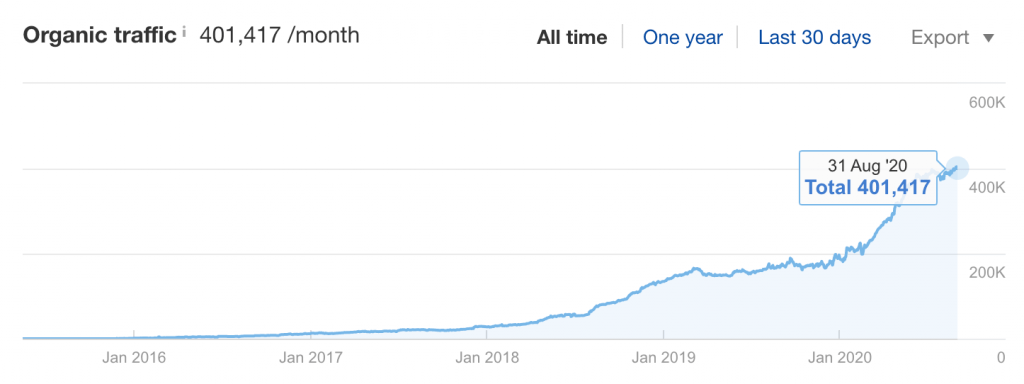Content marketing is important because it helps companies drive traffic, build trust with consumers, increase conversions, and generate more business.
How do we know?
Because content marketing is a big part of our marketing strategy, and we’ve experienced all of those benefits firsthand.
In this post, we’ll dig deeper into why content marketing is so important, explore a few successful content marketing case studies, and show you how to get started with content marketing today.
Five reasons why you should invest in content marketing
SEO, PPC, email marketing, influencer marketing… with countless marketing channels to focus on, why is content marketing a good, or perhaps even the best choice?
Here are five reasons why content marketing is an important marketing channel:
- Content marketing is a scalable, long-term strategy
- Content marketing helps you nurture and convert leads
- Content marketing helps fuel other marketing channels
- Content marketing helps to educate potential customers
- Content marketing is often cheaper in the long-term
1. Content marketing is a scalable, long-term strategy
If you focus on creating helpful, evergreen content that people are searching for, it has the potential to rank high in Google for more keywords over time. And this generates consistent search traffic growth, like this:
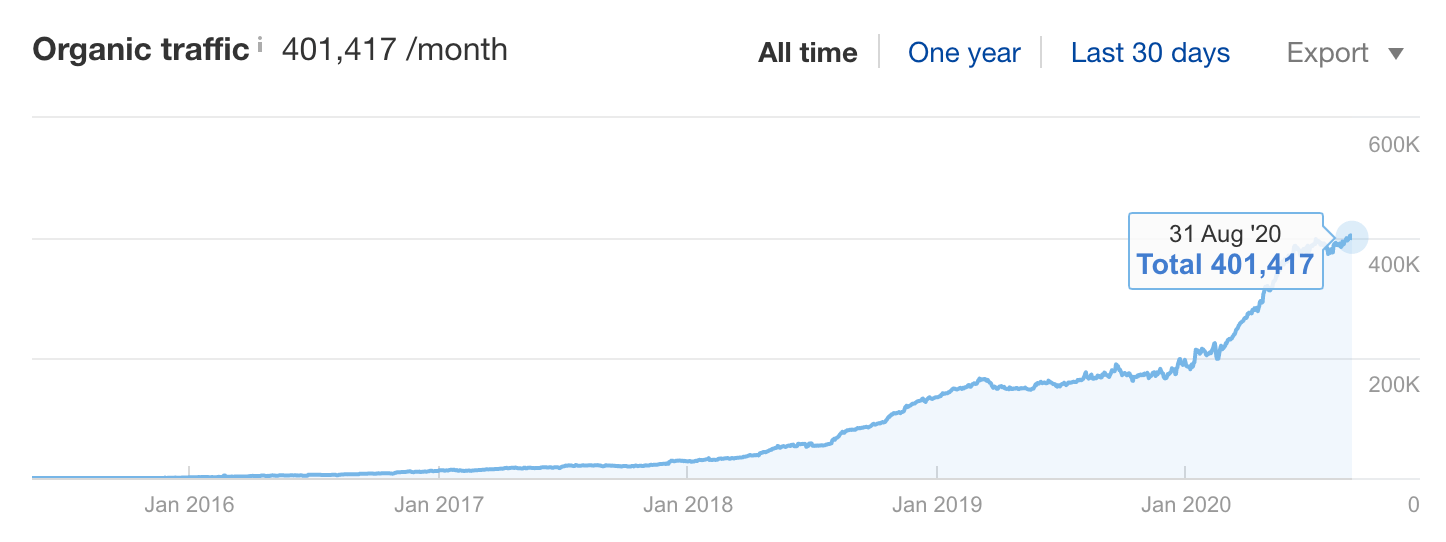
Estimated organic search traffic to the Ahrefs blog from 2016 to 2020.
And it’s not blogging-specific. Ever since we put significant effort and resources into growing our YouTube channel, our number of views has been growing up and to the right:
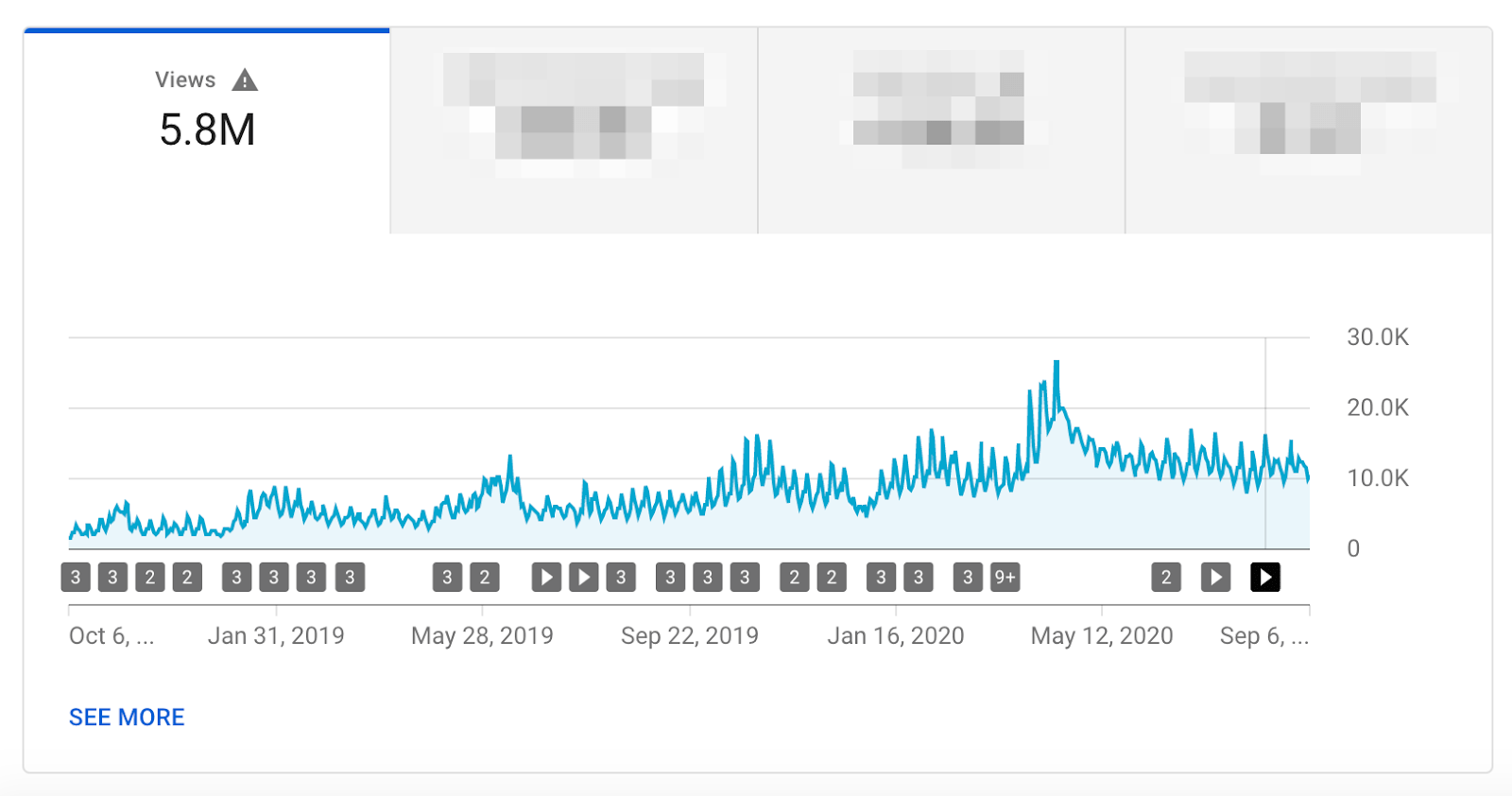
Growth in video views on YouTube since late-2018.
Because all of this traffic is organic, our entire marketing team could take a short break, and traffic would continue to flow—at least for a while. That can’t be said for paid ad campaigns where traffic stops the second you stop pumping money into them.
2. Content marketing helps you nurture and convert leads
People rarely just search for whatever you sell, click on your website, and buy right away.
Instead, they go on a “journey.”
First, they learn that you exist. Then, they learn about how you can help solve their problems, why you’re the best solution, and finally, if you’re lucky, they become customers.
This is exactly how marketing funnels work.

Now, there are many ways to pull people into your marketing funnel and nurture them, but content marketing is arguably one of the simplest and most effective.
Here’s how it might work in practice:
Let’s say that Billy wants to drive more traffic to his site, so he searches Google for “how to drive more traffic to your website,” where he comes across our article.

Here, he learns about the importance of SEO for driving traffic before closing the tab and going about his day.
A few weeks later, he clicks a post about SEO on Twitter. That post talks about the importance of backlinks and recommends our free backlink checker. Billy uses this to see how many backlinks his site has compared to the competition.
Seeing how few backlinks he has, he looks for YouTube videos about building links and comes across our video:

At this point, he’s absorbed so much from our content that he decides to sign up for our trial. And even though he has never used Ahrefs before, he feels like he knows his way around it reasonably well.
Impressed with the functionality of our tool during the trial, he signs up for a monthly plan.
You can see that in this example, content marketing was crucial in attracting Billy as a customer. If we didn’t have content for each stage of the buyer’s journey, he probably wouldn’t have ever signed up.
Learn how to create content for each stage of the buyer’s journey in this post.
3. Content marketing helps fuel other marketing channels
It isn’t easy to utilize many modern marketing channels effectively without content.
For example, take a look at any brand’s social media profile. You’ll often see that much of what they share is blog posts and video content.
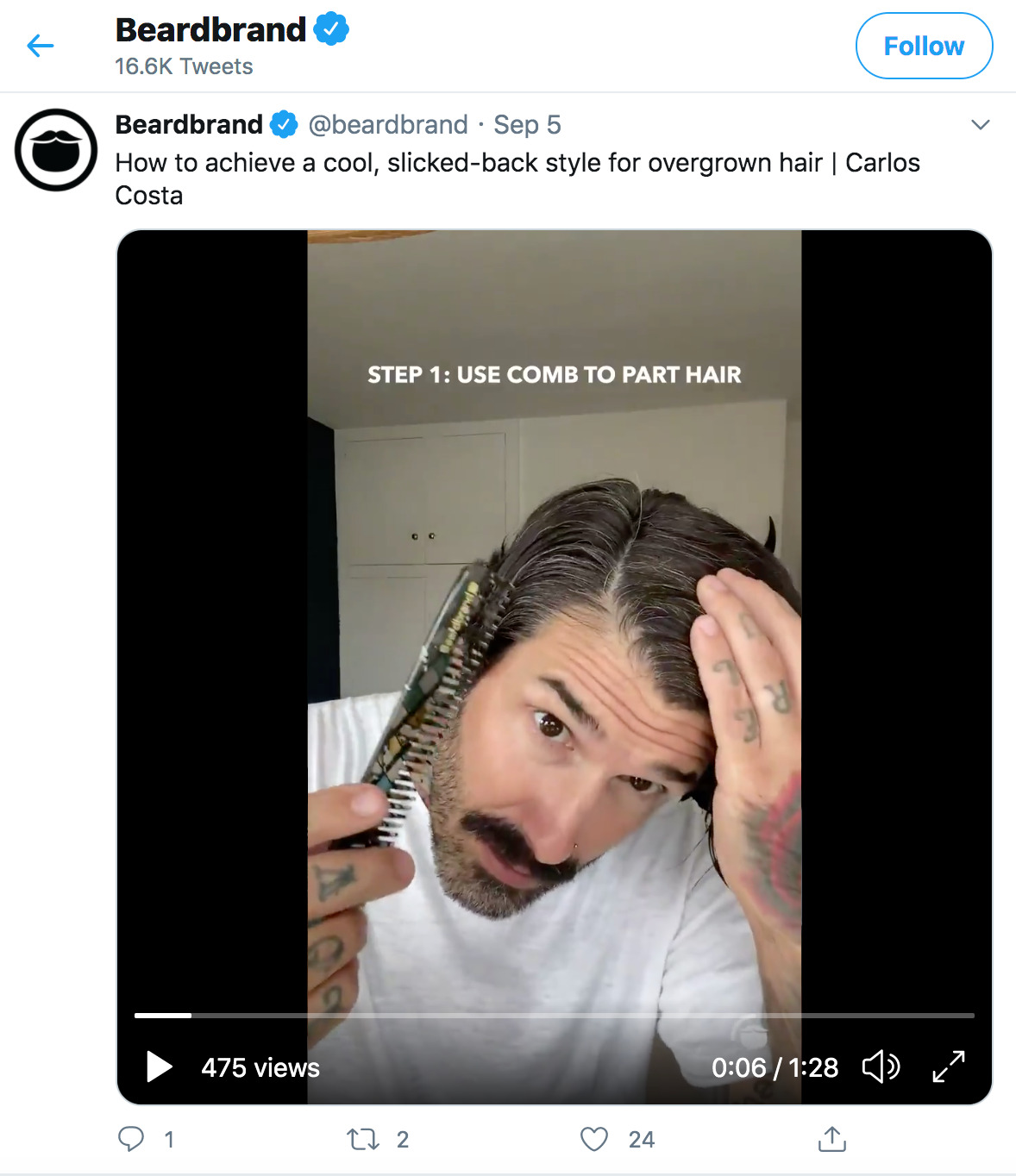
It’s the same story for email marketing. Most newsletters exist primarily to share new content like blog posts and videos.
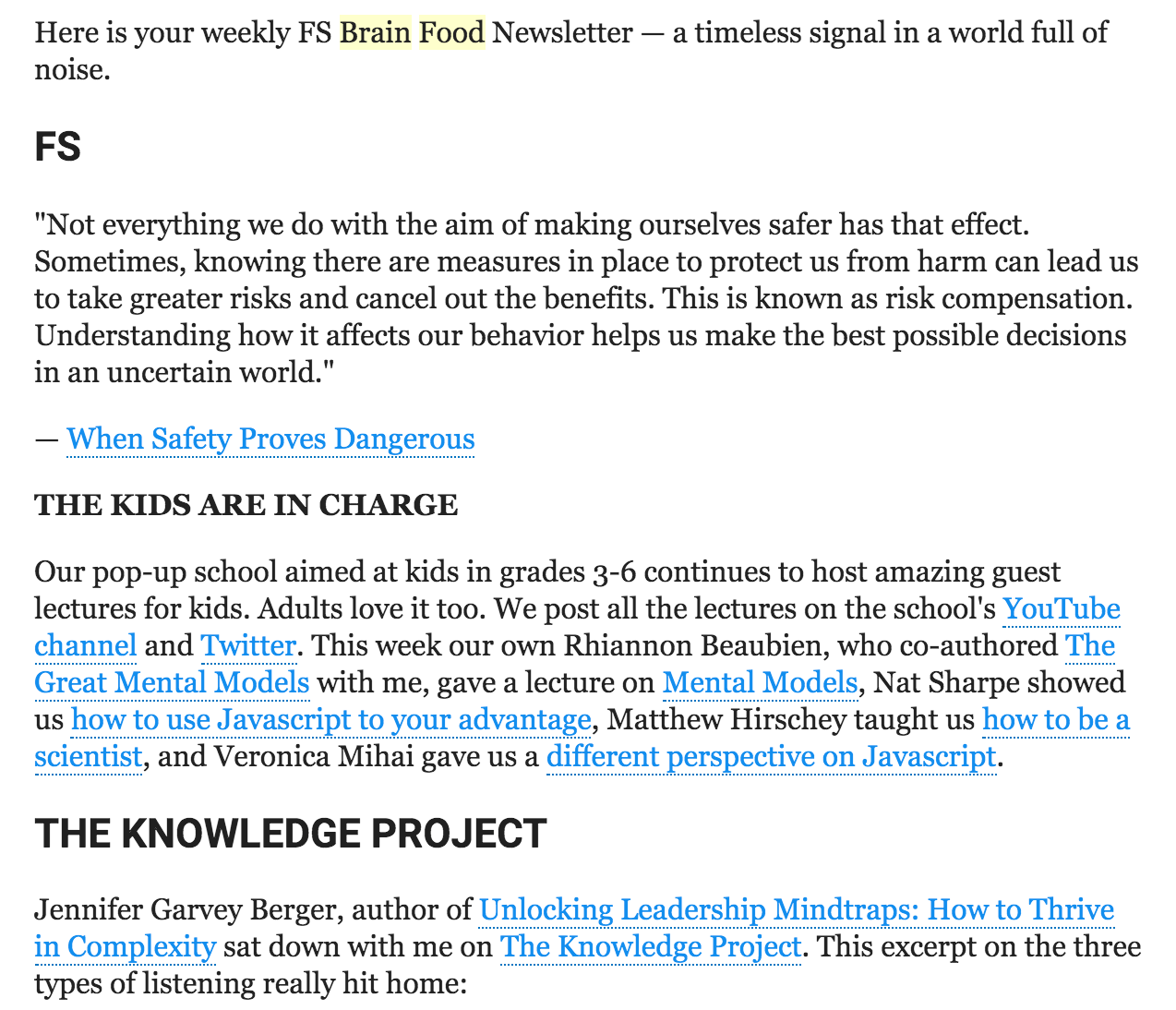
Paid ads are another channel fuelled by content, especially on sites like Facebook, where popular ad formats are videos or blog posts.

And let’s not forget about word of mouth, arguably the most powerful marketing channel of all. If people are exposed to your content through other marketing channels, they’ll often share it with friends and colleagues.
Just look how many shares Beardbrand have racked up on some of their articles:
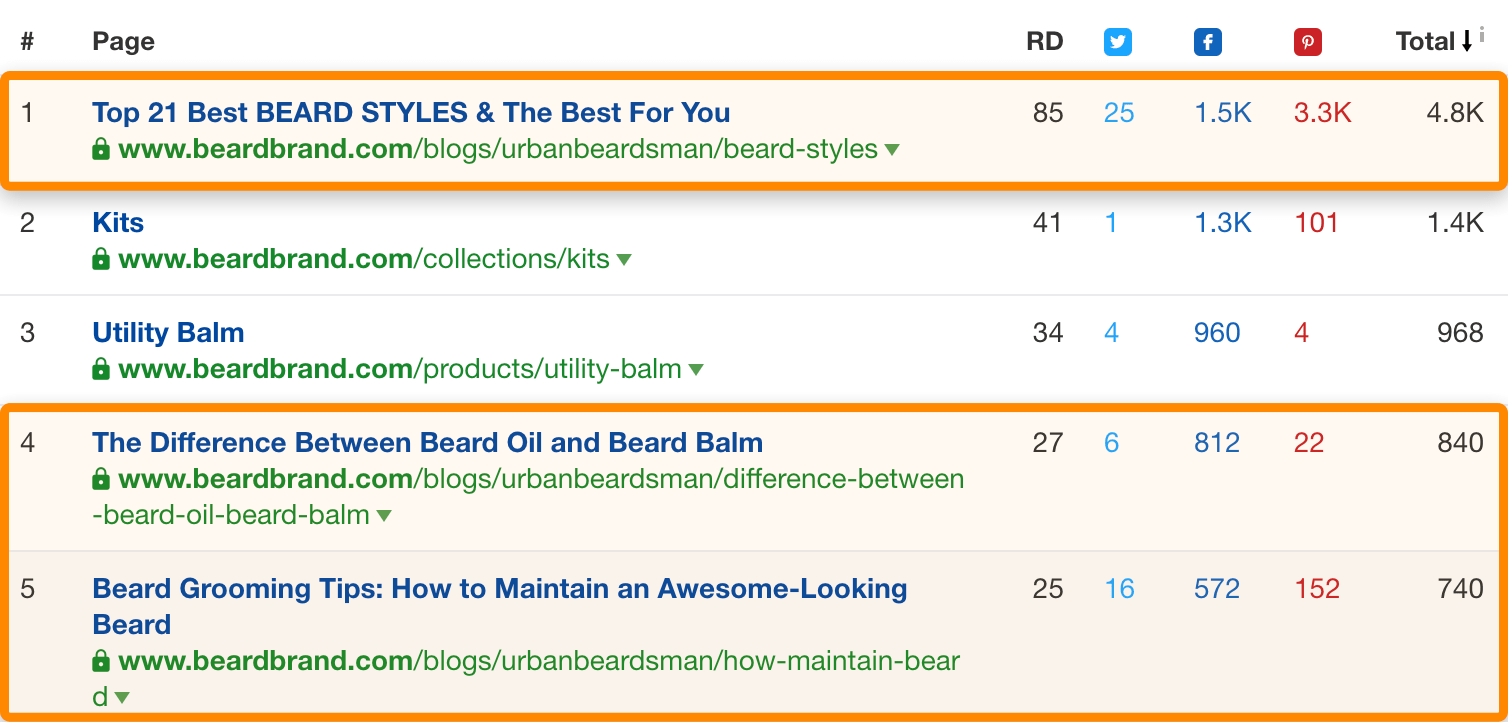
Top Content report in Ahrefs’ Site Explorer for beardbrand.com.
If we assume that each of those sharers had just ten followers on social media, that means tens of thousands of new people were exposed to their brand.
4. Content marketing helps to educate potential customers
Tim, our Chief Marketing Officer, once told me:
My theory is that people don’t sign up for your tool and then learn how to use it. My theory is that people first learn how to use your tools, and they sign up because they know how to use your tool.
Nowhere is this more apparent than our own blog and YouTube channel.
Most of our content explains how to solve SEO and marketing problems with the help of our toolset. In fact, our homepage discourages people from signing up until they’re sure they know how to use our tools:
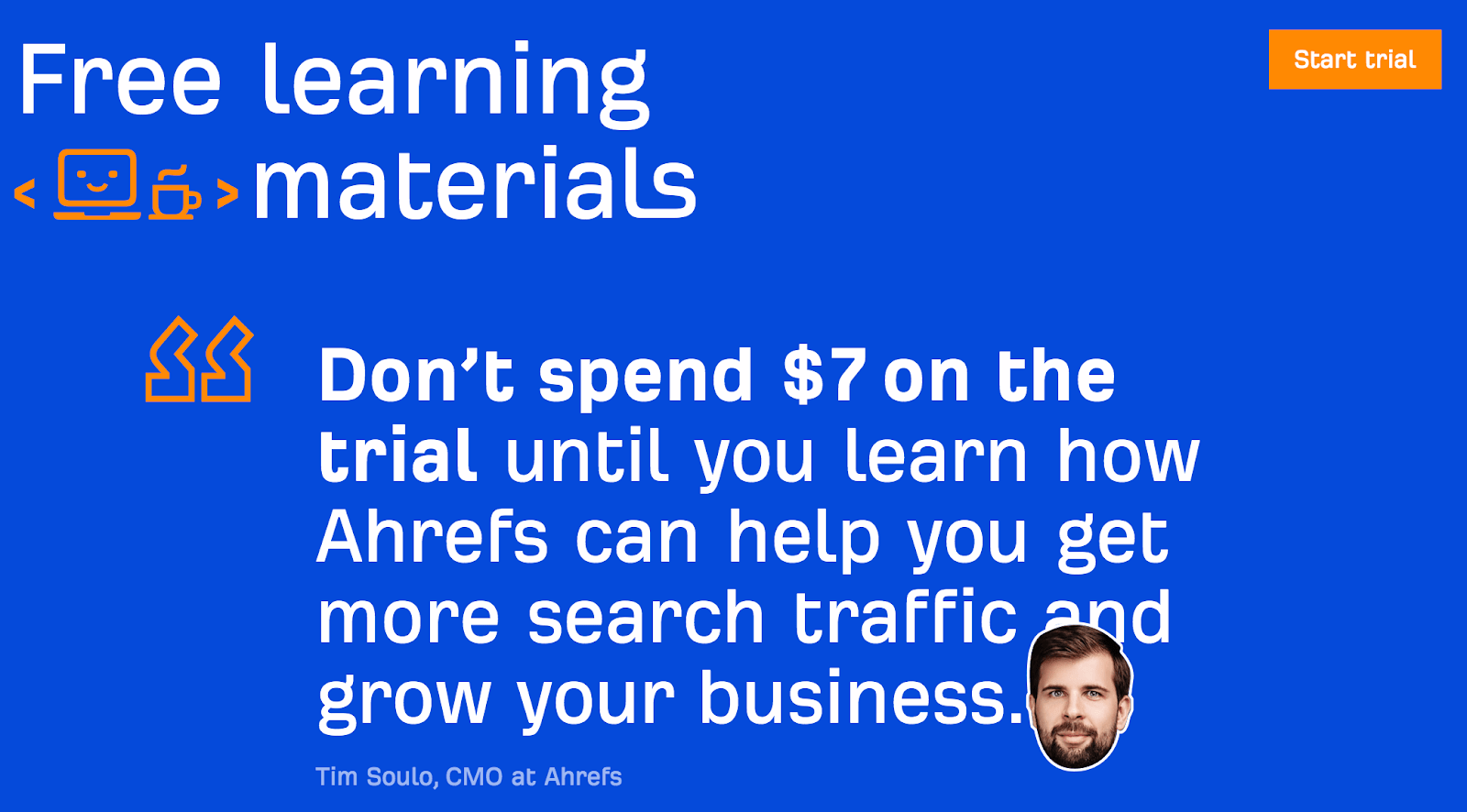
So, when people sign up for our product further down the line, they already know how to use Ahrefs from our content.
Excellent content on long-tail keywords -> https://t.co/YZIsOCHISx It also resulted in me signing up for a free trial. Great work @ahrefs :)— Thomas Krawiec (@tkrawiec) September 28, 2017
Not only does this help us acquire better customers, it also helps retain them, since they’re always learning how to do more with our toolset.
5. Content marketing is often cheaper in the long-term
In our experience, compared to other traffic acquisition methods, content marketing is the most cost-effective way to acquire targeted traffic. For example, our blog ranks in Google for over 193,000 keywords and generates an estimated 451,000 monthly search visits.

If we were to acquire that traffic via Google Ads, it would cost us an estimated $795,000 per month (or $9.5 million per year.)
Given that we’re spending nowhere near that amount on producing and optimizing content, it’s reasonable to say content marketing is cheaper than paid ads in the long run.
Two examples that prove the value of content marketing
Let’s take a look at how different businesses have succeeded with content marketing.
1. Luxy Hair
Luxy Hair is an online store that sells hair extensions and hair-related accessories. And with 3.17 million subscribers, they’re killing it on YouTube.

Their videos get tens of thousands of views (sometimes even hundreds of thousands):
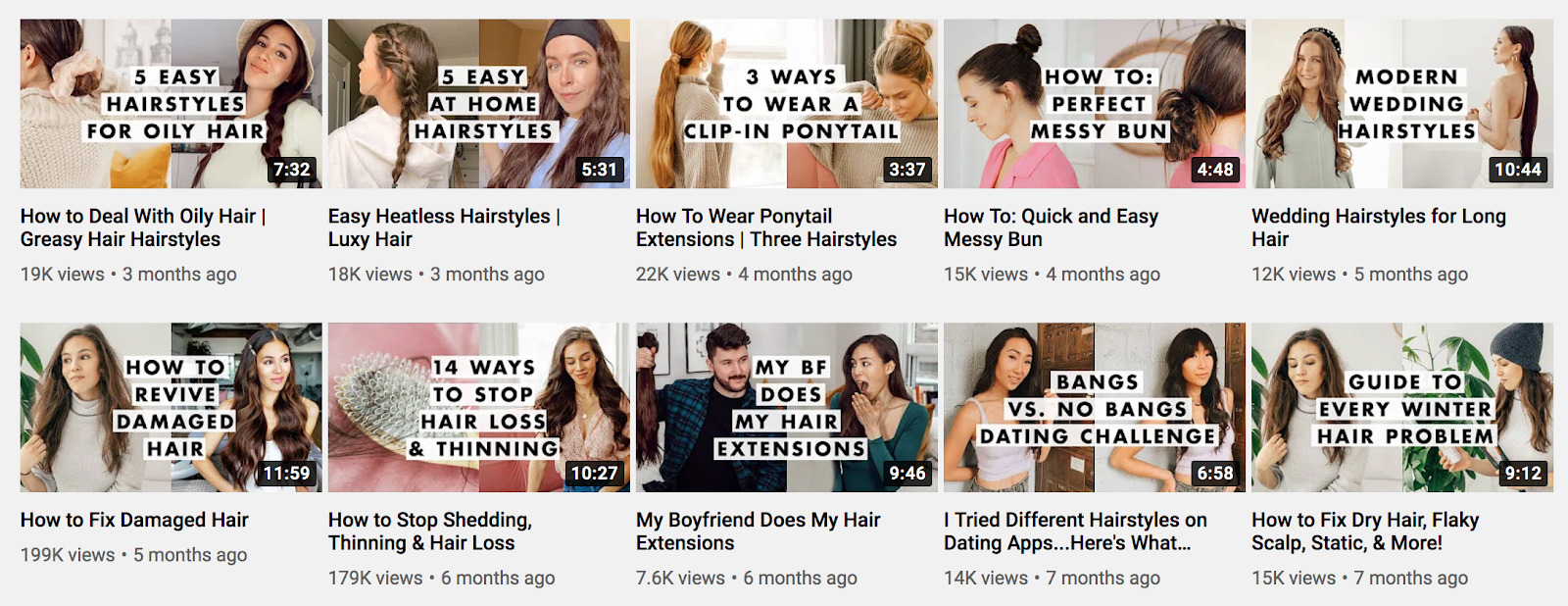
They also rank high on YouTube for relevant keywords. Here are just a handful of those they rank at the top for, along with their estimated monthly search volumes:
These are topics their customers are searching for, and where they can naturally showcase their products:

This allows them to build brand awareness and demonstrate their products in action. And when customers are interested, the product is only a click away in their video description:

2. Lodge Cast Iron
A common objection I’ve heard is that content marketing only works in “exciting” industries like travel, food, and lifestyle.
But businesses like Lodge Cast Iron prove that isn’t true.
Lodge is a manufacturer and retailer of cast iron skillets. On the surface, this already sounds boring. However, Lodge has managed to create helpful content that generates tons of traffic.
For example, their guide about “seasoning cast iron” generates an estimated 22,800 monthly visits from Google alone:

Organic traffic stats for Lodge’s “seasoning cast iron” article, via Ahrefs’ Site Explorer
To illustrate how, here’s an excerpt from Lodge’s cast iron seasoning guide:

You can see that their content is genuinely helpful and isn’t just a sales pitch. It explains how to solve the reader’s problem using products they might already have around the house, but also recommends their seasoning spray.
How to get started with content marketing
Convinced that you should be doing content marketing?
Here’s a quick-and-easy way to get started:
1. Know who you’re trying to reach
A common mistake in content marketing is not knowing who you’re targeting. If you don’t know who you want to consume your content, you won’t create content to attract them.
An excellent way to do this is to create a buyer persona. Essentially, this is an “imaginary person” that represents your ideal customer.
Follow this guide to learn how to create a good buyer persona.
2. Find out what people are searching for
To get long-term results from content marketing, your content should ideally rank in search engines like Google and YouTube.
To do this, you need to find the topics that your target audience is searching for.
Start by brainstorming a few topics that are relevant to your niche. For example, if you’re a fitness instructor, a potential ‘seed’ keyword could be “workout.”
Enter the keyword into a free keyword tool like Ahrefs’ Keyword Generator, and it’ll show you up to 150 keyword ideas and their estimated monthly search volumes.
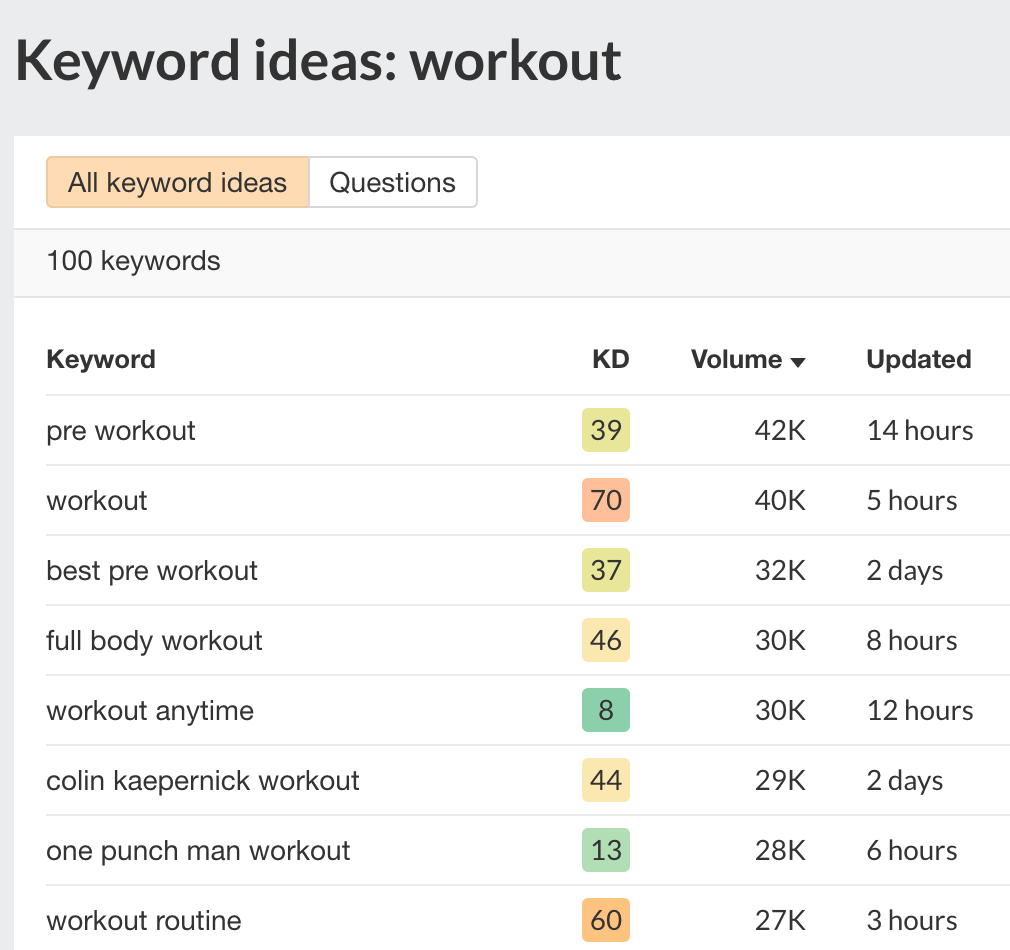
If you’re making videos, you can do the same thing with our free YouTube Keyword tool:
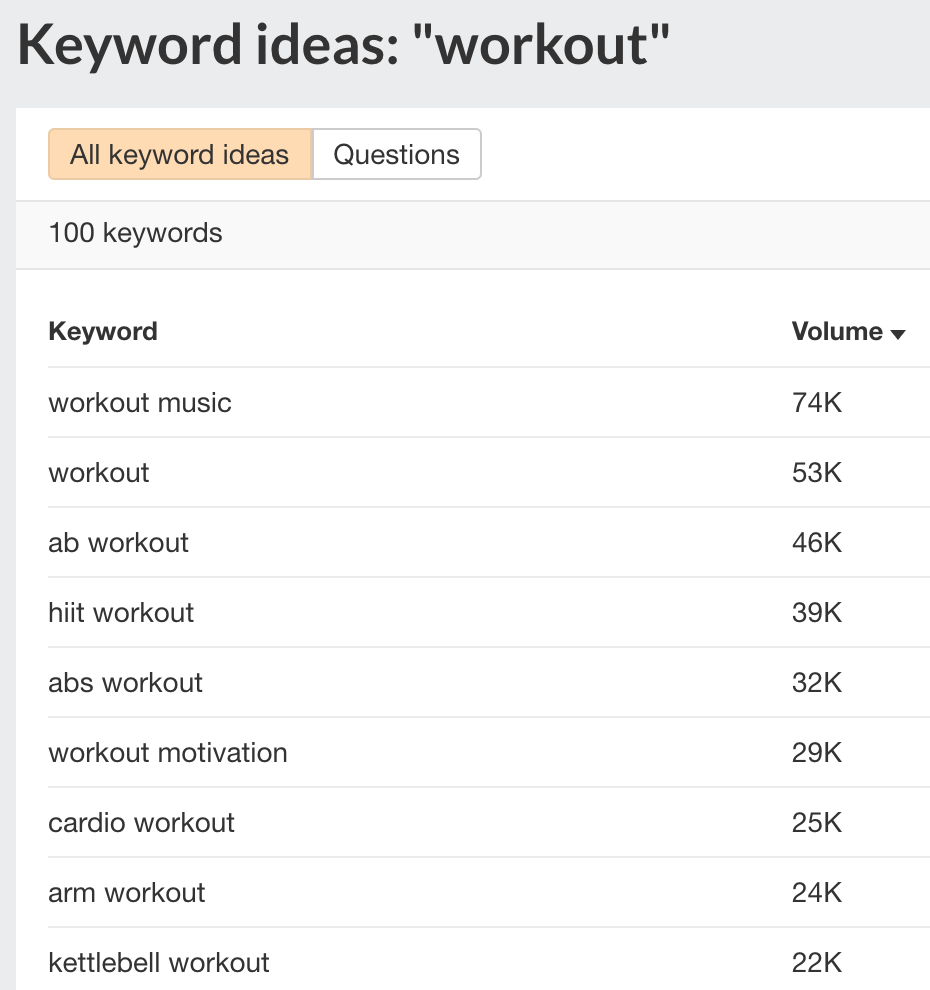
From here, eyeball the list and choose the topics that are relevant to your website.
3. Publish consistently
If you don’t publish, you can’t rank.
To make sure you’re publishing consistently, it’s a good idea to commit to a content calendar. This is basically a schedule of when and what you want to publish.
For example, this is what our content calendar looks like at Ahrefs:

For us, 1–2 articles per week work. But depending on your budget and resources, your ideal schedule might differ. So, make sure you fix a schedule that you’re comfortable with.
4. Promote your content
There are thousands, if not hundreds of thousands, of pieces of content published every day. No-one’s going to magically discover your content, especially if your site is relatively new.
So, you’ll have to actively promote your content and get it in front of your target audience.
Follow this content promotion checklist to get more visitors to your site:
https://www.youtube.com/watch?v=PoVYweKH4ck
Final thoughts
Content marketing is a long-term play, but it can have a life-changing effect on your business.
We’re living proof of that. It’s pretty much our entire marketing strategy, and our business is growing handsomely year over year.
Just remember that content marketing success doesn’t happen overnight. The longer you stick with it, the more benefits you’ll see.
Got questions? Hit me up on Twitter.
